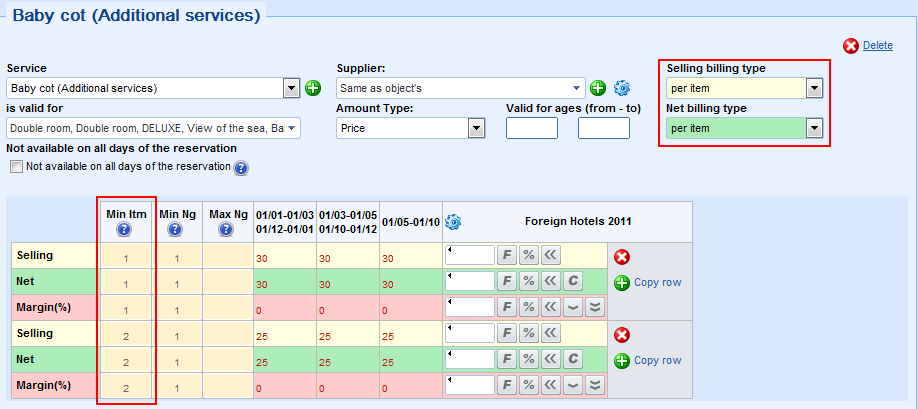Lemax Software is constantly growing. We have recently discussed our billing types with one of our potential customers and realized that we have missed out on a very important feature. In case you have products that you are selling on a “per item” basis, like skiing lessons, baby cots, parking spaces… you sometimes need to assign different prices depending on the quantity. We decided that this needs to be managed inside the Lemax Software in order for it to be the complete software solution for tour operators and travel agencies we want it to be.
The “Per item” billing type and the “Min Items” column
When defining your price lists, you have different types of billing: per room, per person, per day, per person per day… One of these is also the “per item”. So, when you say that something is billed on a “per item” basis, the price will be multiplied by the number of items, regardless of the number of people. For example, two families of eight are coming to an apartment, but they are with two cars, so they need two parking spaces (which is a service you also charge). So, the parking space would be defined on a “per item” basis, and you would charge your clients for two.
However, it is often the case that the price will drop if your client takes more items. For example, if you are selling skiing lessons, one lesson costs 100 €, but a set of five lessons costs 90 € per lesson.
To do this, you first need to define that the service you provide is billed per item. You do this in the billing type drop down lists when defining the price list.

After you select the billing type to be “per item”, a new column called Min Items will appear in the price list. This column is used to define what is the minimum quantity of items required for a certain price to be used. In the example above, we have two price rows, one having the minimum items set to one, other one to two. This means that if the client takes one baby cot, as in the example, they will need to pay 30, as in the price row with the minimum items set to 1. However, if you they two (or more) baby cots, the booking system will find the row where minimum items is set to 2, and they will pay 25 per item.
You can, of course, define more price rows and using this function thus defining a complex price list that matches all cases you might encounter.
Conclusion
Automatic price calculation is important. You cannot expect each of your employees to know each price list with all of its specifics by heart. And, in case you have online booking, you cannot expect your client to understand these price lists and know how to make the most of them, it is the job of your tour operator or travel agency software to provide this feature for them.
So it is important to be very careful when defining your products and price lists, this will make your work so much easier and faster in the long run.


